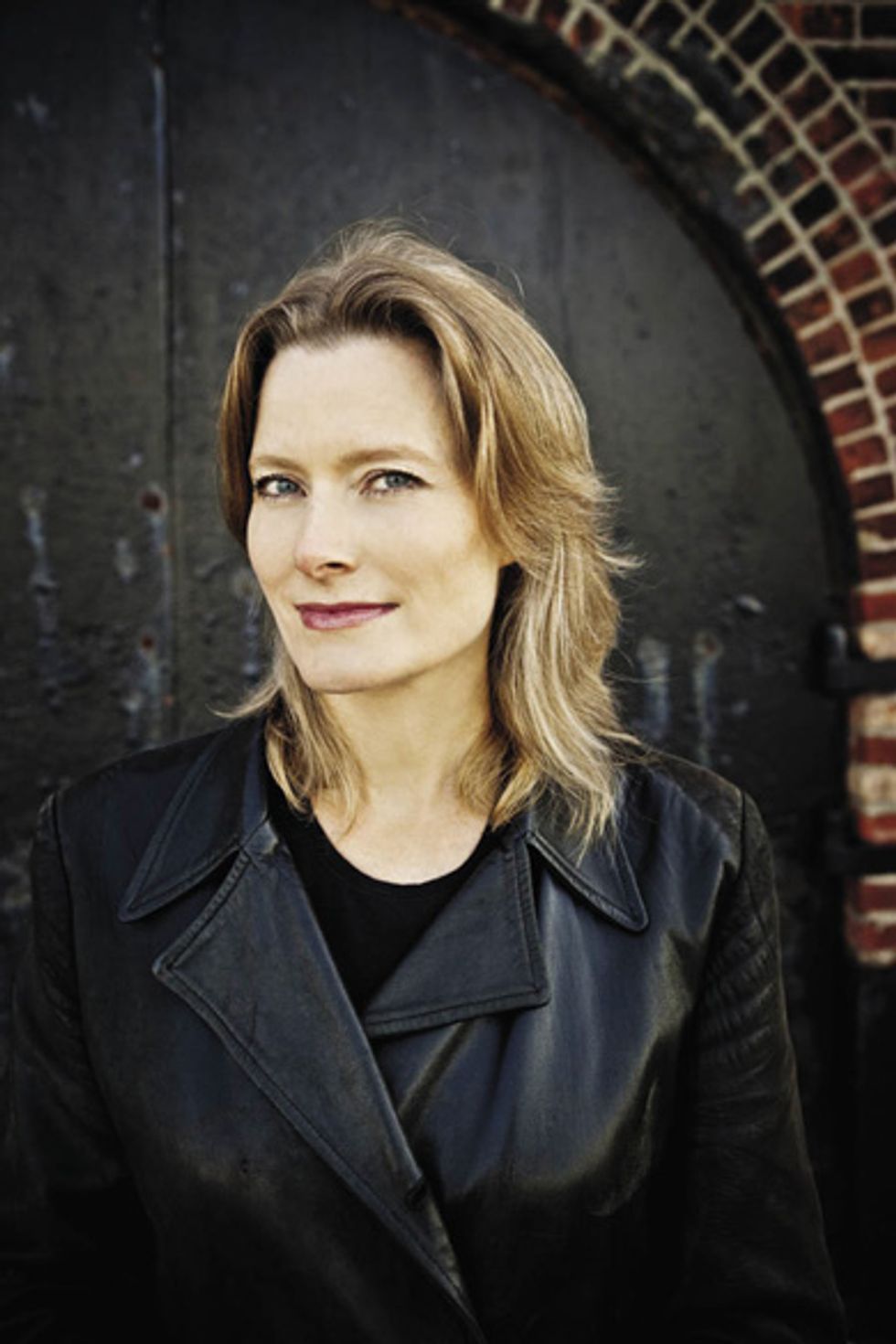It seems everything writer Jennifer Egan touches turns to gold. Her novels, which include Look at Me and The Keep, are national best sellers and have been nominated for numerous awards. The Chicago native, who grew up in San Francisco and now calls Brooklyn home, is a frequent contributor to The New York Times Magazine and has published work in The New Yorker, Harper’s, McSweeney’s Quarterly Concern, and elsewhere. In April, Egan was awarded the highest of literary honors—her latest book, A Visit From the Goon Squad, won the Pulitzer Prize for fiction after taking the National Book Critics Circle Award earlier this year. Such success could easily go to one’s head, but Egan remains humble despite the accolades. She continues to push the envelope and think outside the proverbial box, experimenting with literary voice, style, and structure and bravely approaching new territory (HBO optioned Goon Squad for adaptation into a television series). She is never afraid to take a leap of faith, an attribute that has, thus far, worked greatly to her advantage.
How does it feel to have won
so many awards for your writing?
Really great, of course, and a bit dreamlike. One imagines these things, half-assuming they’ll never happen. So, for me, it’s a reconfiguration of the universe. It’s also scary. There’s this fear that my next book might not live up to such standards. I feel compelled to fulfill the legitimacy I’ve been given.
Did you face any obstacles
getting your first book published?
The biggest obstacle was writing a good book. I failed miserably the first time. I was turned down 15 or 16 times before Nan Talese at Doubleday decided to take it on. She put a big box of tissues next to me the first time we sat down. I came in with a lemon, and she taught me how to fix my writing. She’s a great editor.
Each of your books deals with vastly different subject matter. What’s your research process?
I always use a mix of journalistic research styles—both talking to people and reading. With A Visit From the Goon Squad, the hardest part to research was the technology behind music recording. I spent a lot of phone time with a very patient mixer and producer. I also read a lot about the music industry, but that didn’t feel like research.
All of your books deal in some way with our image-obsessed culture. Where does that
fixation come from?
I think it’s all around us. I’ve always been fascinated by our image culture and the way advertising and mass media impact the human experience. I can’t seem to exhaust the theme. It’s what American life revolves around right now.
You still handwrite your novels on legal
pads rather than a computer. Why?
I write my first draft in a blind, unconscious state. If I can read it in typeface, it’s impossible to hold on to that blind state. There are also collateral advantages to using longhand in the draft stage. The Internet can be a huge time suck.
What was it like going to high
school in San Francisco in the ’70s?
I think the city was in a sleepy hangover, and the echo of the ’60s was everywhere. I was just a kid, and my parents weren’t a part of that scene. It’s like I was just seeing the remnants of hippie culture through a car window. A lot of what we did harkened back to that time, though. I wore beads and used to walk barefoot on the streets.
Now that you’re in Brooklyn, which do you prefer aesthetically—Victorian or brownstone?
I think it’s impossible not to prefer the Victorians in San Francisco. The color scheme and quality of light are unlike any other American city I’ve been to. I do like the urban grittiness of Brooklyn, and you definitely don’t feel that in SF. Goon Squad is all about rock ’n’ roll.
What’s on your personal playlist?
It’s interesting—I only listen to music at night or when I’m running. Lately, I’ve been into Mumford & Sons and Jenny Owen Youngs, but I also like The Police and The Flames.
What books would you most like Goon Squad
to appear next to in a bookstore?
Edith Wharton’s The House of Mirth. It’s everything I want to do with books. It’s fun, hilarious, sharp, and full of social commentary. The other one would be Daniel Boorstin’s The Image, a supremely genius work about image culture.
Your latest novel isn’t told in one voice or style, which is a real departure from conventional fiction. Were you afraid to take that risk?
No, I knew that the harder a book is to describe, the more difficult its life out in the world is going to be. That was exactly the case with Look at Me, which still ended up doing well despite the fact that it was hard to classify. I knew that I would have the same problem with Goon Squad, and I was OK with that.
With Goon Squad, you explore unique ideas about format and structure, including an entire chapter written as a PowerPoint presentation. What’s next?
I’m working on a shorter piece that involves a character from Goon Squad. It’s pretty out there. I’d like my next full-length work to be a historical novel—which I’ve never done before—set in the 1940s. Michael Chabon’s The Amazing Adventures of Kavalier and Clay is a phenomenally researched book and is also set in the ’40s, so the bar has been set pretty high.





















